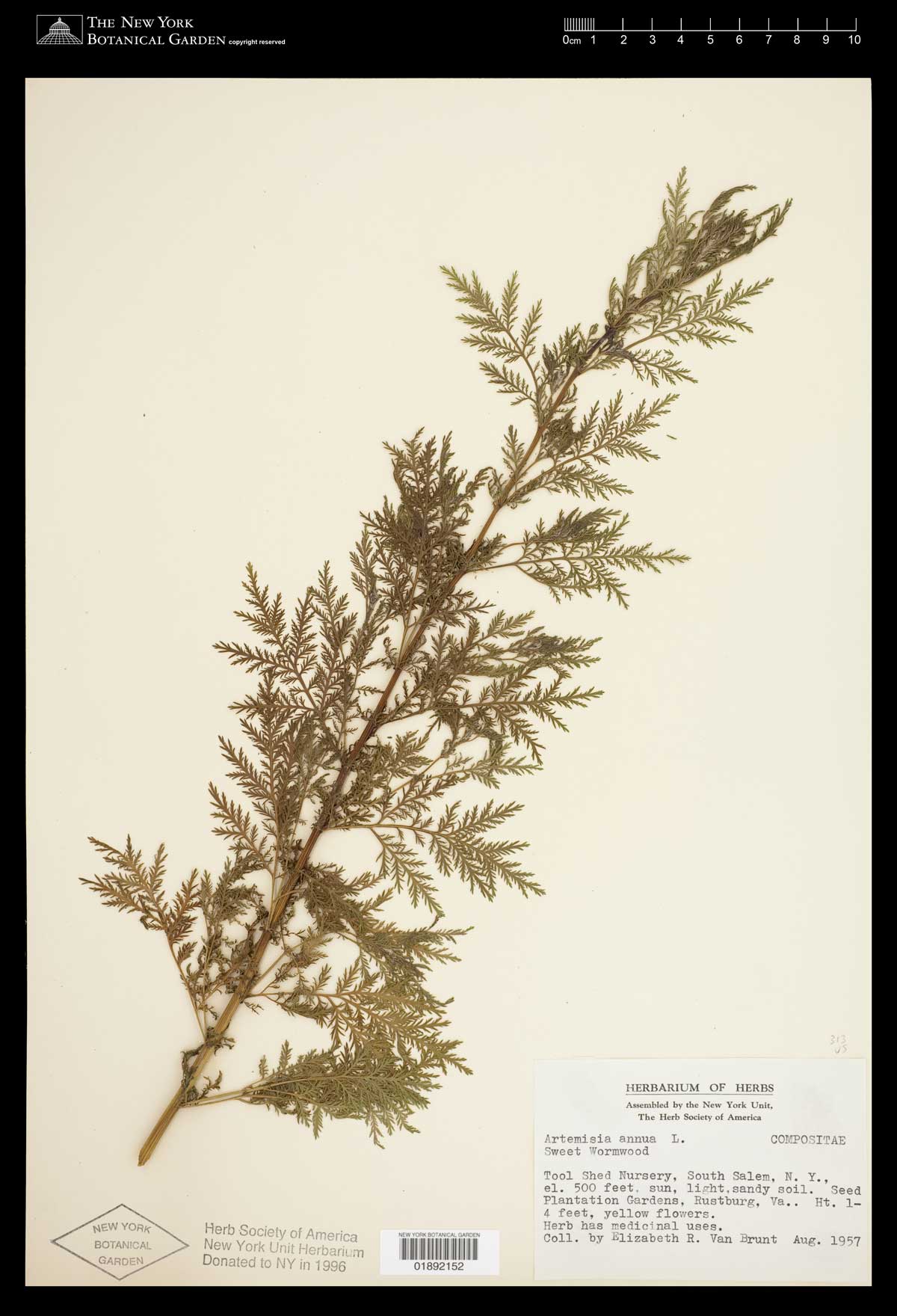A Powerful Plant for Fighting a Dreaded Disease
Posted in Interesting Plant Stories on March 12, 2015 by Maya Jaffe
Maya Jaffe graduated from Florida International University and is currently an intern at the William and Lynda Steere Herbarium, where she is working on a project to digitize Thelephora and Agaric mushrooms.
“A handful of qinghao immersed with 2 liters of water, wring out the juice and drink it all.”
That was the recipe prescribed in 340 AD by Chinese alchemist Ge Hong in his A Handbook of Prescriptions for Emergencies as a treatment for malaria (1). For the bulk of human existence, people looked toward the forest and their gardens for remedies for their ailments, just as we now browse the aisles of our local pharmacy. So many of the modern drugs we rely on for our health have botanical precursors. In a way, Ge Hong’s advice still stands today because Quinghao, also known as sweet wormwood (Artemisia annua), contains the chemical compound artemisinin, found in most of the leading antimalarial drugs (2).
Artemisia annua is native to Eurasia and is cultivated on a large scale in China and Vietnam. This member of the Asteraceae (the daisy or sunflower family) is a shrub with a single stem that typically reaches a meter in height and has alternating branches with dissected, fern-like leaves and small, yellow flower heads. And, as the label on this 1957 specimen from the William and Lynda Steere Herbarium notes, “herb has medicinal uses.”

Ancient Chinese medicine typically utilizes the above-ground parts of the plant, but now scientists have narrowed their focus to the leaves, from which artemisinin can be extracted easily. Because of its chemical composition, artemisinin is highly unstable when warm and therefore has a short shelf life in hot environments. Because of this and the general expense of extraction, Dr. Jay Keasling at the University of California Berkeley is currently exploring the synthetic production of artemisinin (4).
While appreciating modern technology and scientific advances that allow for the development of synthetic drugs, we should recognize and value the medicinal properties inherent in many plants in their natural state, such as sweet wormwood. One way to do that is with The New York Botanical Garden’s Wild Medicine iPhone app, which explores the medicinal properties of various plants throughout the Enid A. Haupt Conservatory.
Next time you’re out in nature and admiring the flora, try to remember that while the aesthetic beauty of plants is breathtaking, those same plants may be vital to every breath that you take.
- Tu, Youyou. The Discovery of Artemisinin (qinghaosu) and Gifts from Chinese Medicine. Nature Medicine 17.10 (2011): 1217-220.
- White, N. J. “Assessment of the Pharmacodynamic Properties of Antimalarial Drugs in Vivo.” Antimicrobial Agents and Chemotherapy. U.S. National Library of Medicine. 1997.
- WHO Monograph on Good Agricultural and Collection Practices (GACP) for Artemisia Annua L. Geneva, Switzerland: World Health Organization, 2006.
- Ro, Dae-Kyun, Eric M. Paradise, Mario Ouellet et al. Production of the Antimalarial Drug Precursor Artemisinic Acid in Engineered Yeast. Nature 440.7086 (2006): 940-43.


This is a very good piece, Maya, and gives us much to think about. I, too, learned much from the Wild Medicine phone app, and hope that its content will be expanded.
Thanks also for the photo of the 1996 specimen. Looking forward to reading more by you.